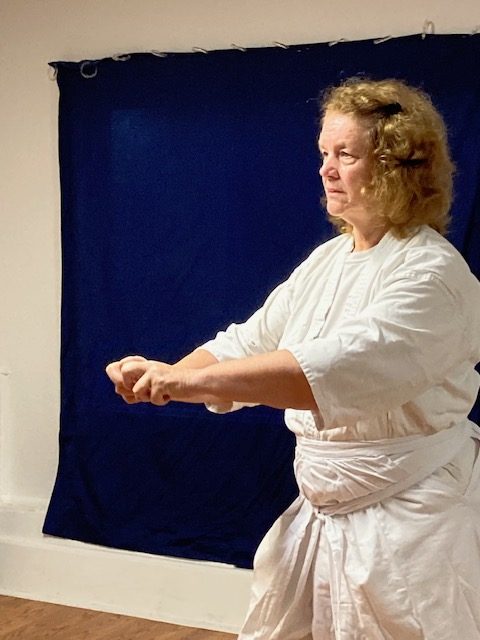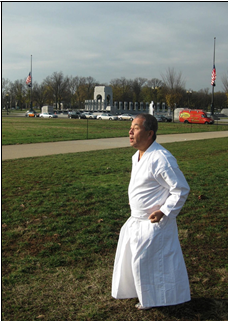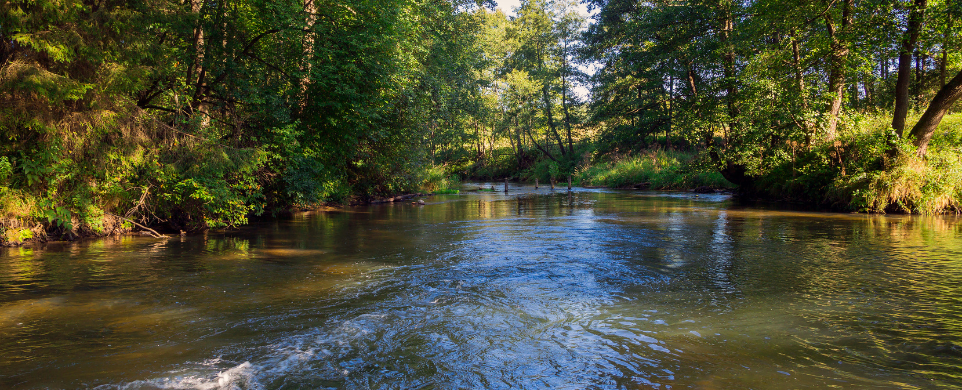By “Next Steps” Connie*
I wrote a recent article on grief, death and loss; I now have some reflections on the benefit of practicing Taimyo Part I — specifically the movement 碎山/Sai-Zan “breaking through mountains”— using kokyu in relation to the individual practice of death awareness. As a forewarning, the subject is awareness of one’s mortality, so you may wish to pick the best time to read and reflect on this topic.
What can be practiced with Sai-Zan within Taimyo? This was a focus of study at the Quebec Gasshuku in
September 2022: we step back while doing a tsuki forward, we step back a second time, while keeping our concentration, then we step back a third time bringing our fists to the center of our chest/heart and then tsuki forward to finish with our arms open wide. The analogous military strategy is when the leader retreats with their troops while keeping concentration, keeping troops from fleeing in fear, and making sure no one is left behind.
Sai-Zan and its application to living life was the focus of a dinner discussion in Quebec. I asked the group, “Can you name other (non-military) heroic efforts threatened by almost certain demise?” Here are some of the ones I thought about: the doctors and nurses in New Orleans during Hurricane Katrina in the stranded nursing home with its frail residents; neighbors like Ko Ueda taking food to isolated neighbors during the COVID pandemic; Mike Sheets taking sandbags in wheelbarrows up our street to prevent garages from flooding, when a large water main broke and sent rivers of brown sludge down our street. Can you think of examples?
I have been reading and reflecting on how our mind resists awareness of our mortality. Fears and regrets are often reasons to avoid this subject. What do most of us really wish for? One desire is to build an ideal world, to live fully, so we may not want to ask ourselves “What if?”

And what about our daily life awareness? I was fortunate to experience 20 years of working in hospice and palliative care, experiencing death and dying up close. I was aware of my mortality and the ever-present reminders of the shortness of life that made me stay awake and stay aware.
I see a practice for death awareness, so I explored doing the three movements of Sai-Zan, while incorporating what Thich Nhat Hanh wrote in his book, The Blooming of a Lotus:
Knowing I will get old, I breathe in, Knowing I can’t escape old age, I breathe out.
Knowing I will get sick, I breathe in. Knowing I can’t escape, I breathe out.
Knowing I will die, I breathe in. Knowing I can’t escape death, I breathe out.
>>>>>
Determined to live my days deeply in mindfulness, I breathe in.
Seeing the joy and benefit of living mindfully, I breathe out.
I brought this practice to a local hospice during an open mic session on death and dying on November 3rd. Comments included “visceral,” “cathartic,” and “a way to process grief.” For Shintaido and students of body movement, there is focused work with the breath – kokyu – breathing in through the nose; breathing into the belly and slowly releasing. We can practice Sai-Zan with a focus on our breath while stepping backward and reaching forward with our arms/fists.
This is an unfinished essay – how might you finish it? How do you develop awareness of mortality? What parts do you resist or how do you avoid daily practice? What are your deepest fears? What are your greatest joys?
Watch the Reflection on Sai-Zan on Shintaido of America YouTube channel.
*Many ask me “What’s next Connie?”- hence my moniker: Next Steps Connie.

Phillipe Beauvois has been a student and teacher of Shintaido for 45 years along with Taichi and Shin-Anma Shiatsu. He participated in the First International Shintaido Gasshuku in 1980 and studied with Robert Breant. In 1985 he started teaching Shintaido on the French Riviera in Grasse. Phillipe, who has been diagnosed with terminal head and neck cancer, reflects on his learnings and his wishes for future students.
Consider visiting Phillipe´s website (in French, can be translated into English in a browser).
Links
Reflections on Sai-Zan video
https://youtu.be/25WQ-WtVGbE



